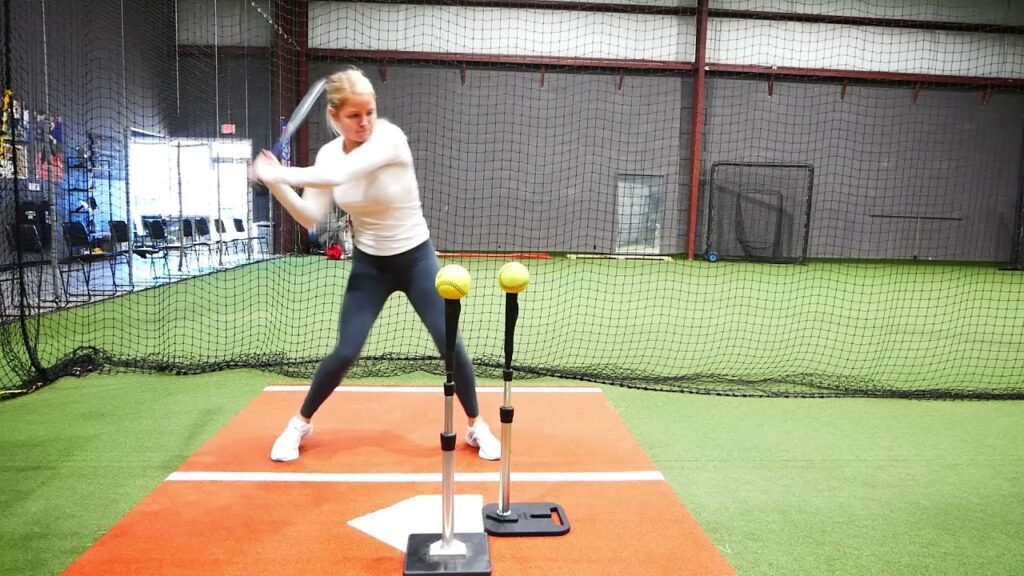In this post, Tanner Tees welcomes Megan Rembielak to share her thoughts, insights, and thoughts on quick hands softball drills she uses.
What do coaches mean when they say quick hands in softball hitting?
When coaches or parents talk about quick hands in softball hitting, they are talking about bat speed. They want their players or child to generate more power and produce more bat speed.
What is the opposite of quick hands in softball hitting and why is it bad?
The opposite of quick hands in softball would be a slow, lagging bat. Meaning, the hitter is only using their hands and upper body to swing and that completely slows the swing down.
Power comes from the hips. If we neglect the hips and only use the upper body, the swing is weak.
Is having quick hands all about the swing?
No. Having quick hands isn't completely about the swing. Having “quick hands”, or better referred to as bat speed, is just one of the checkpoints in the entire swing.
You do, however, properly sequence the swing in order to generate power and speed.
How do you do that?
First, it starts in the load. In the load, you need to separate your hands back from your body and get in an athletic stance. Separating your hands from your body gives that stretch you need in order to eventually fire your hips.
Think of the separation as if you were throwing. You wouldn’t throw starting at your chest. You have to bring the ball back a bit in order to create velocity. It’s the same in hitting.
After your load and once your front heel is down, it’s the hips that go next. If your hands fire before your hips, you’ve lost all power.
After hips, it’s the hands that follow and then the barrel. Hands stay inside the ball to keep the quicker swing. If the barrel goes flying out, you’ve instantly lost bat speed.
Lastly, all power comes from the hips. Be aggressive when turning in order to generate power.
To sum it up, quick hands (or as I like to say bat speed) come from separation, hips leading hands, hands staying inside the ball, and hips turning aggressively.
With respect to strength training and mobility, what can a hitter do to get faster hands?
Lifting weights can help with regard to strength training and mobility - ultimately aiding your goal of faster hands.
What are quick hands softball drills that help with getting faster hands?
The following three quick hands softball drills I use to develop quick hands or faster hands in my own softball training: The Connection Drill, The Hips Drill, and the Two-Tees Drill.
Let's take a look at each one below for quick hands in softball.
Connection Drill
The first drill you can do to work on a quick, compact swing would be to start with a ball in between your back arm bicep and forearm. You’ll start in your load and swing from there. The idea of this drill is to keep your hands inside the ball and stay connected with your hands, barrel and body. The ball should stay in place until you make contact. After contact, the ball should fly in front of the tee. If the ball falls behind the tee, it means your barrel got away from you and it slows down the hands.
Hips Drill
The next drill would be a separation drill you can do to work on hands staying back while hips go first. In this drill, you will mimic your hips going first while hands stay back (doing so 2x) before swinging normal on the third swing.
Two Tees Drill
The last drill to work on keeping a compact swing would be to work on keeping the hands inside the ball. For this drill, you will place a ball on a tee down the middle of the zone. You’ll place another tee and ball right next to the tee down the middle. The idea is to hit the middle tee. If you hit the outside tee while doing so, it means your barrel is too long and you need to keep your hands inside the ball more.
Thank You Megan!
A big thank you from all of us here at Tanner Tees to Megan Rembielak for sharing her thoughts and drills for developing quick hands in Softball.
Stay tuned as we release more hitting drill content like this from our friends, coaches, and players throughout our community!
You May Also Like
How To Stop Cutting Off Your Swing
The Step Back Drill With Rick Eisenberg
